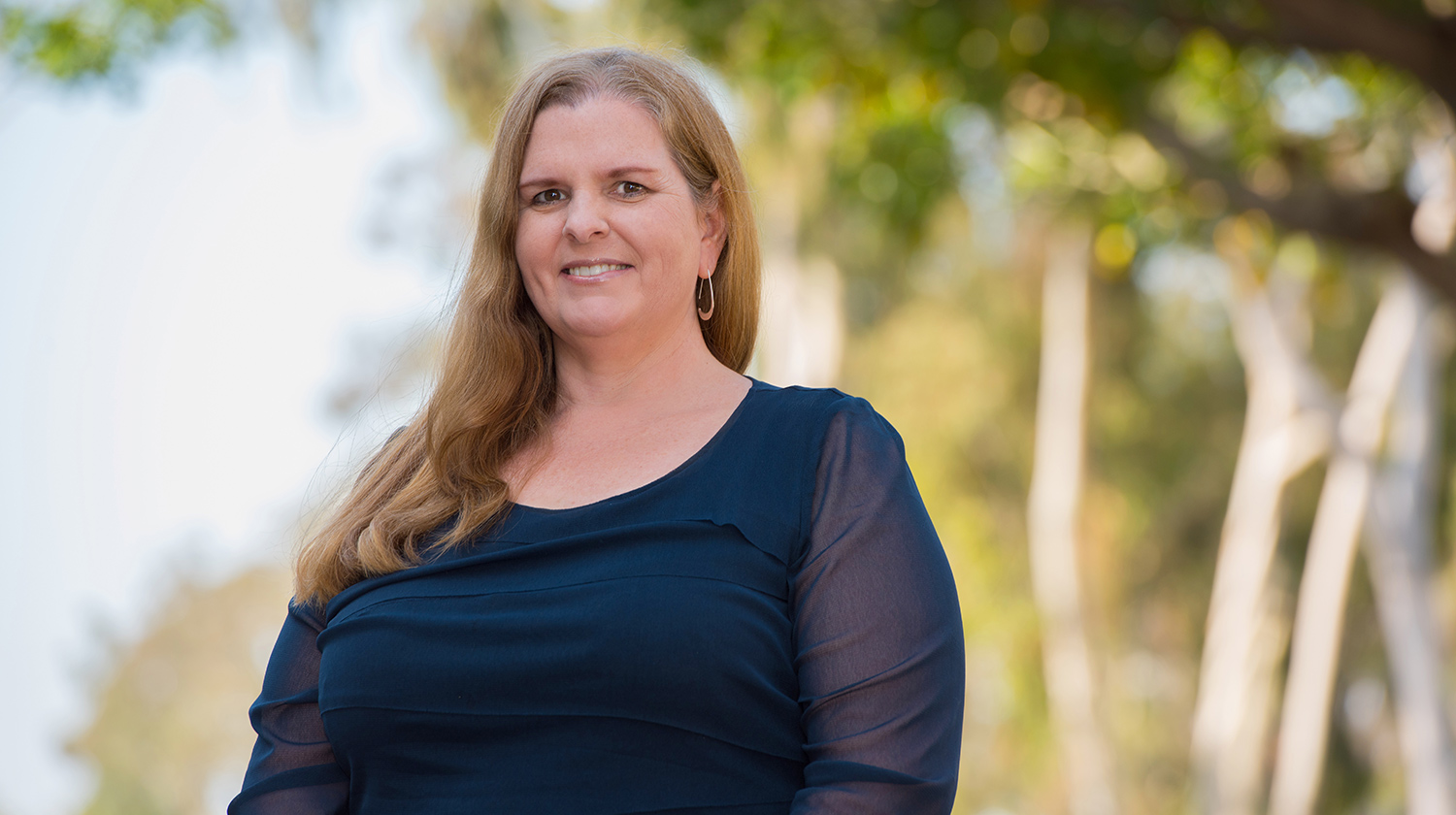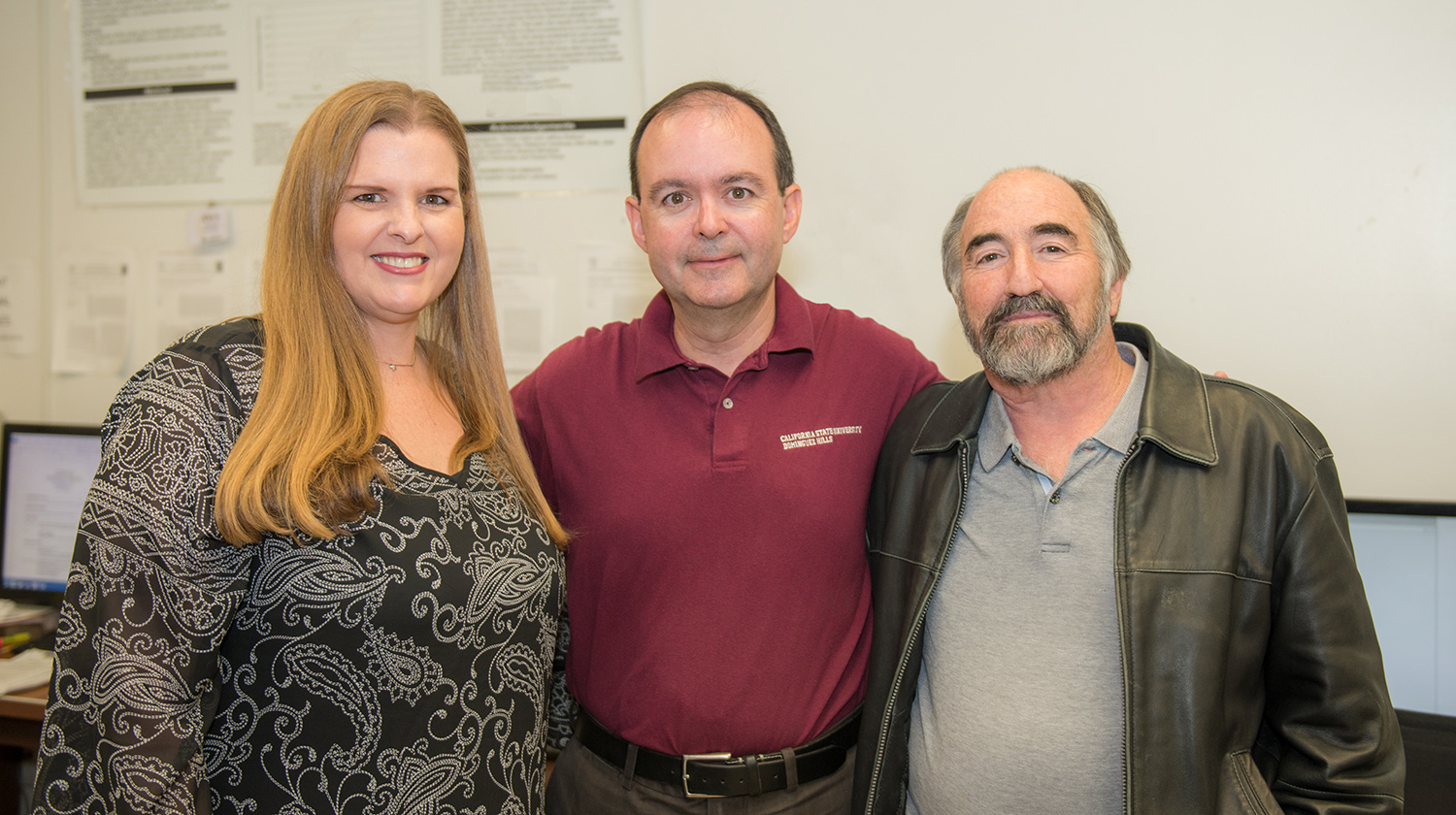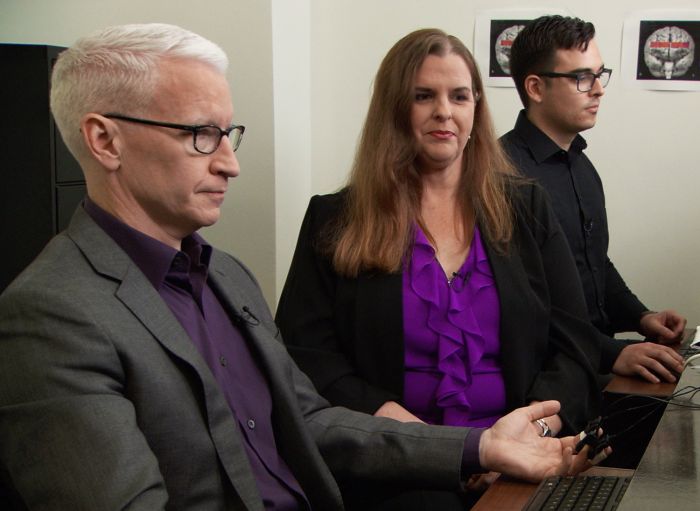 For her dedication and service to the campus community, scholarship in the field of media psychology, and contributions to advancing the university’s reputation as a comprehensive research institution, Nancy Cheever was named California State University, Dominguez Hills’ (CSUDH) 2018 Presidential Outstanding Professor.
For her dedication and service to the campus community, scholarship in the field of media psychology, and contributions to advancing the university’s reputation as a comprehensive research institution, Nancy Cheever was named California State University, Dominguez Hills’ (CSUDH) 2018 Presidential Outstanding Professor.
“I was so happy that I actually cried when I heard. All the years of hard work that I put into my career–that I love–then to be honored in this way is just so sweet and wonderful. It’s hard to explain how much I appreciate the award and this university that has been such a big part of my life for so long,” says Cheever, who began at CSUDH as a student, then a part-time lecturer teaching Writing for the Media in 1996 while she worked as a print journalist.

Cheever (1994, B.A., communications) is professor and chair of CSUDH’s Department of Communications. In addition to juggling a rigorous teaching schedule with chair duties, she spends time in the George Marsh Applied Cognition Laboratory (GMAC) with fellow faculty members Psychology Professor L. Mark Carrier and Psychology Emeritus Professor Larry Rosen collaborating on research and specifically for her, into the effects of habit-forming smartphones. All while helping manage a steady flow of news crews interested in their work.
Her diverse professional experience and education–she is a former newspaper and magazine editor, and has a master’s in communications and a Ph.D. in media psychology– has empowered Cheever to not only excel at teaching media writing, research, reporting, theory and methods at CSUDH, but also media psychology and literacy.
When Cheever returned to CSUDH as a professor of communications in 2004, she, Carrier, and Rosen discovered shared research interests in the field of applied cognitive psychology, a branch of psychology that focuses on information processing-memory, learning, thinking, decision making, language, and consciousness-and their application in real-world contexts.
“I don’t know if I would be where I am without Mark and Larry. They are just great mentors, and we have had a lot of fun running the lab over the past 10 years. It’s been a wonderful collaborative experience,” Cheever shared. Together they founded the GMAC in 2008 and have since co-authored three books together, along with peer-reviewed empirical research articles, book chapters and conference papers.
The professors always involve undergraduate and graduate students in their research, and encourage them to conduct their own research experiments. Their students regularly present their research at conferences and co-author academic papers, and most enter master’s and doctoral programs.
Cheever has appeared on television with their students as lab techs who help prepare reporters to take cognitive tests with the lab’s galvanic skin response (GSR) and heart rate equipment, to demonstrate for their viewers how smartphone interruptions increase anxiety. She enjoys working with students and believes there are many exceptional faculty-student mentorship opportunities across campus that better prepare students for the dynamic workforce.
“I think our students are learning some unique skills beyond their majors, as well as how to better navigate and understand the intricacies of politics, economics, and gaining a more rounded world perspective,” says Cheever. “Seeing someone grow in that way and mature in their understanding of the world is what really makes me happy about working here.”

Journalists who have visited the lab include Anderson Cooper, television personality and correspondent for “60 Minutes,” the nation’s longest-running television newsmagazine, who participated in an experiment for his feature “Why can’t we put down our smartphones?,” which aired in April 2017.
The “60 Minutes” piece led to even more media coverage, including National Geographic Channel’s “America Inside Out with Katie Couric,” which airs April 25, 2018. Cheever was interviewed exclusively by reporter T.J. Holmes for ABC’s “Good Morning America” story “Excessive cellphone use may cause anxiety, experts warn.” The lab has also garnered top-tier international coverage with stories on BBC, and national television news shows in France and Australia.
“The ’60 Minutes’ interview was special because we have all been watching that show forever. It’s sort of the pinnacle of journalism. I was pretty nervous because of the gravity of it all,” confessed Cheever, who has also been a featured source on KPCC’s Crawford Family Forum and on local, national and international radio programs, documentaries, and in print articles.
“This kind of exposure is really good for the university,” added Cheever. “When I started here we were a little campus that wasn’t too well known. Now with the exposure that faculty across campus bring to the university, the president’s leadership, and the wonderful new marketing the university is doing, we are becoming recognized as a great destination for students.”
When compared to the cost of advertising, the worldwide media exposure the GMAC Laboratory has generated over the past two years alone is worth hundreds-of-thousands of dollars, but Cheever believes that helping students and the public understand the significance of their research is what really counts.
“The goal of science is to uncover what we call small truths. We seldom really know the ‘Big Truth,’ but we work to uncover little truths about things with our research,” she explains. “We are constantly looking at other’s work to find relationships among our findings so we can definitively say something about those relationships, and offer realistic possibilities. Our goal is not to tell people what they should do or think, but to make sure they are aware of the consequences, both good and bad.”